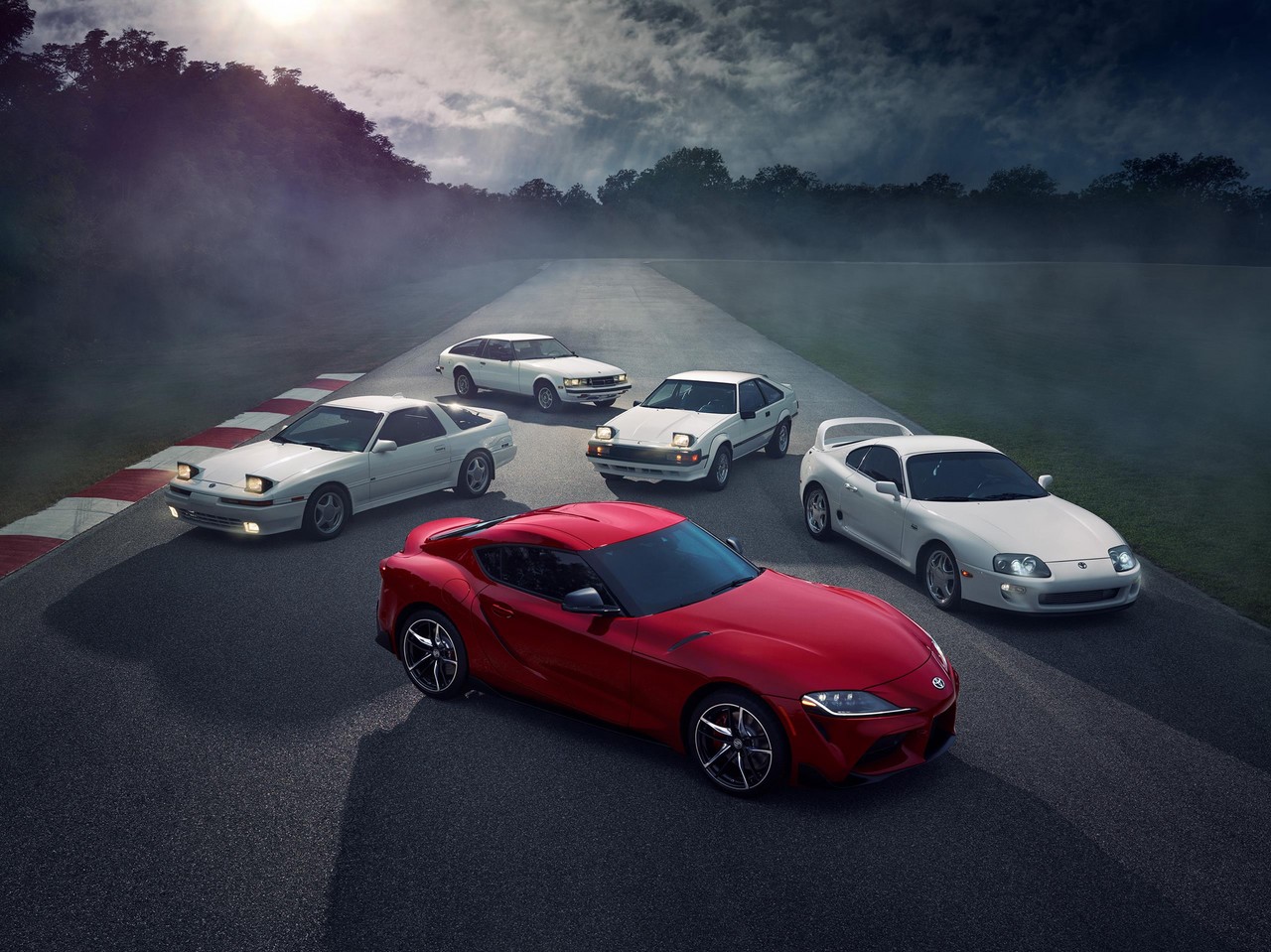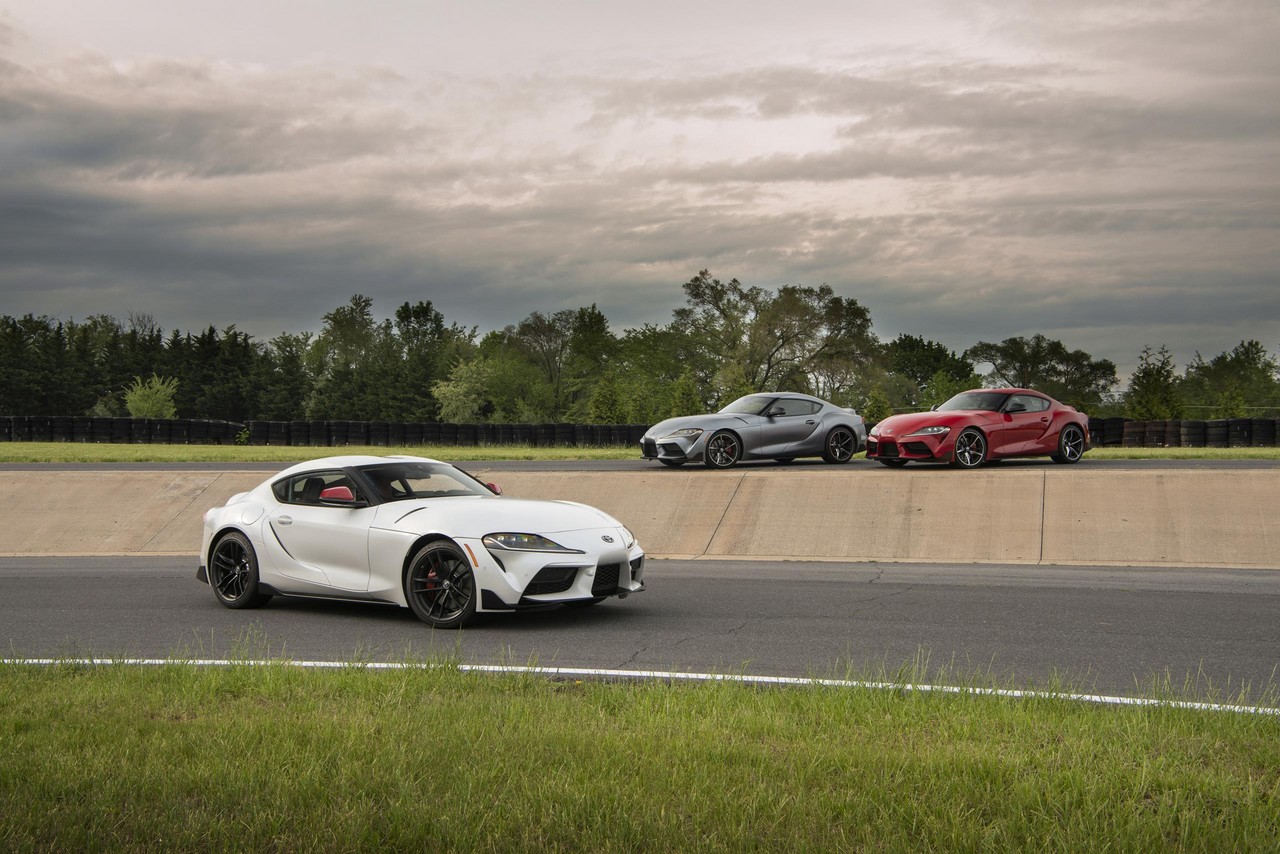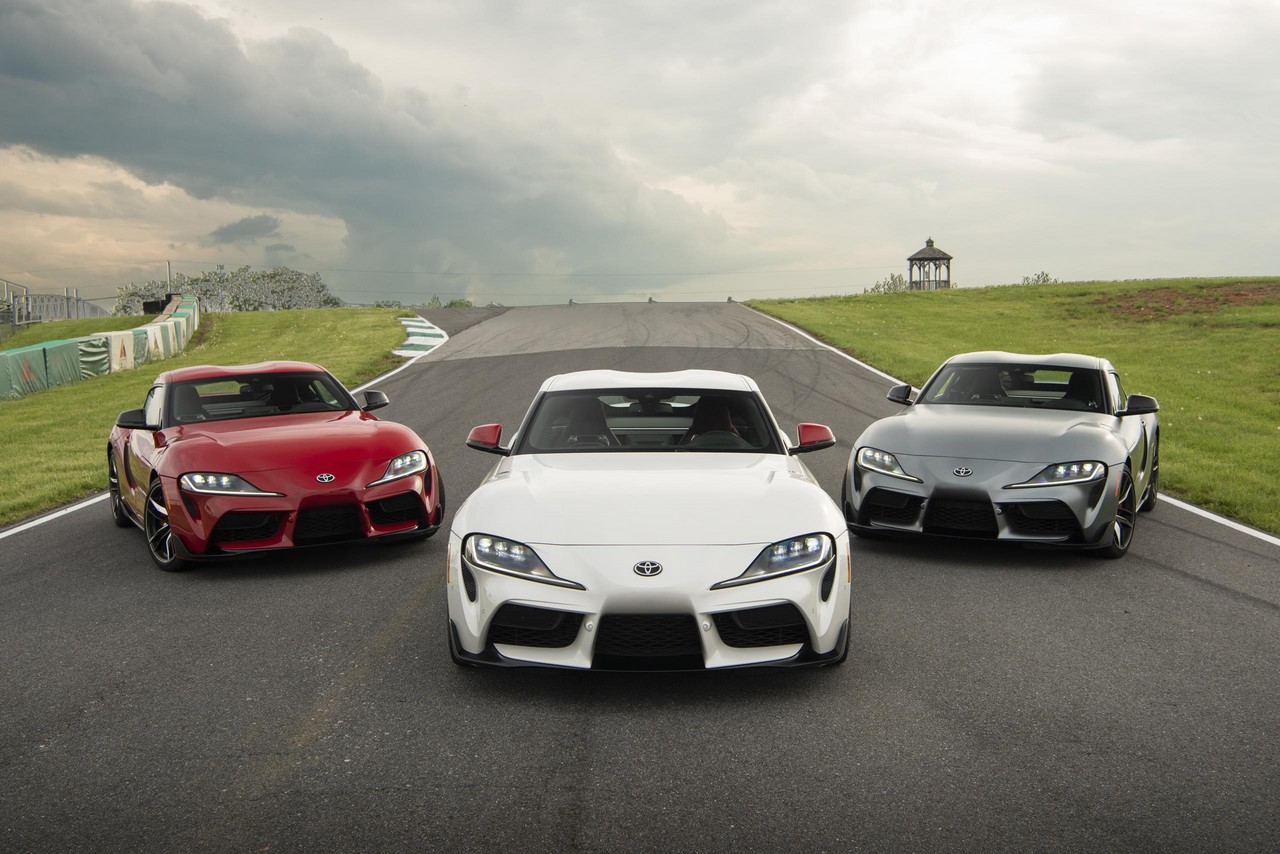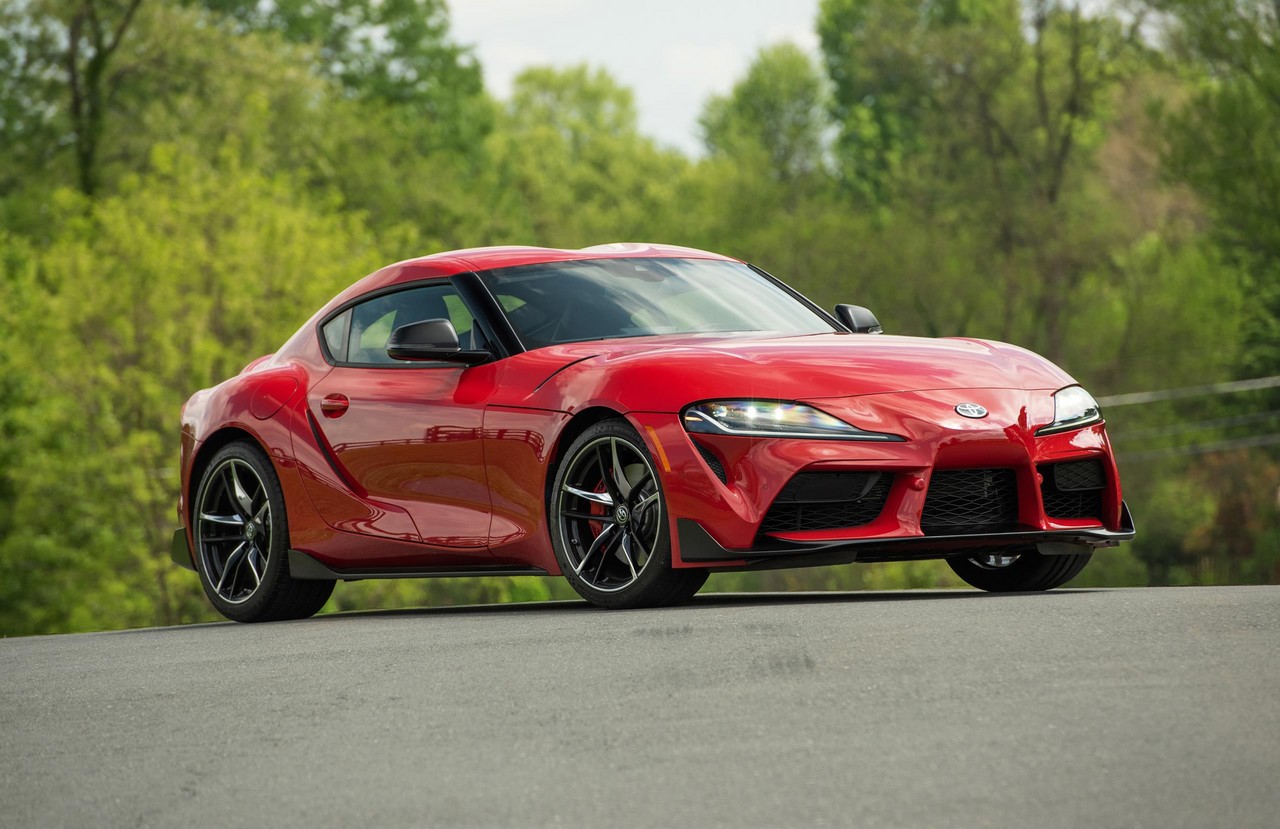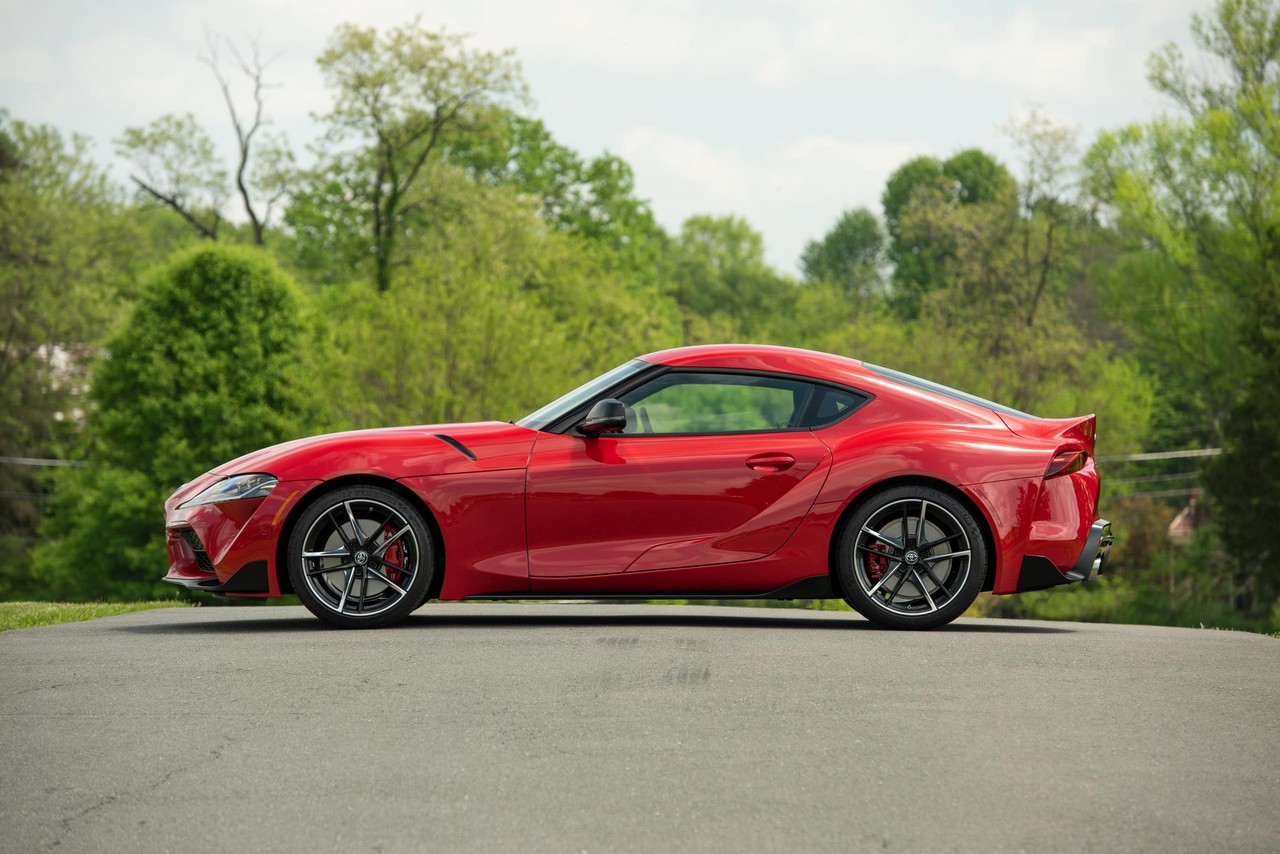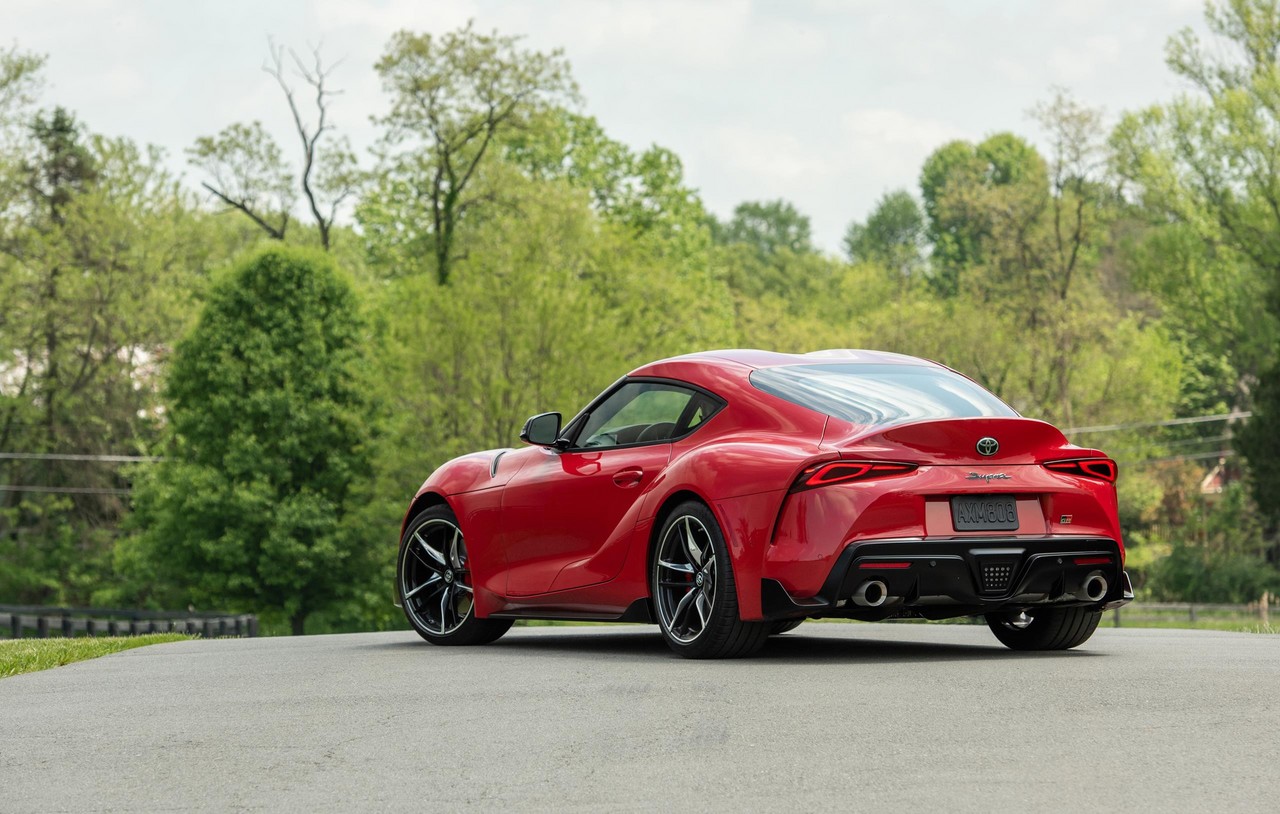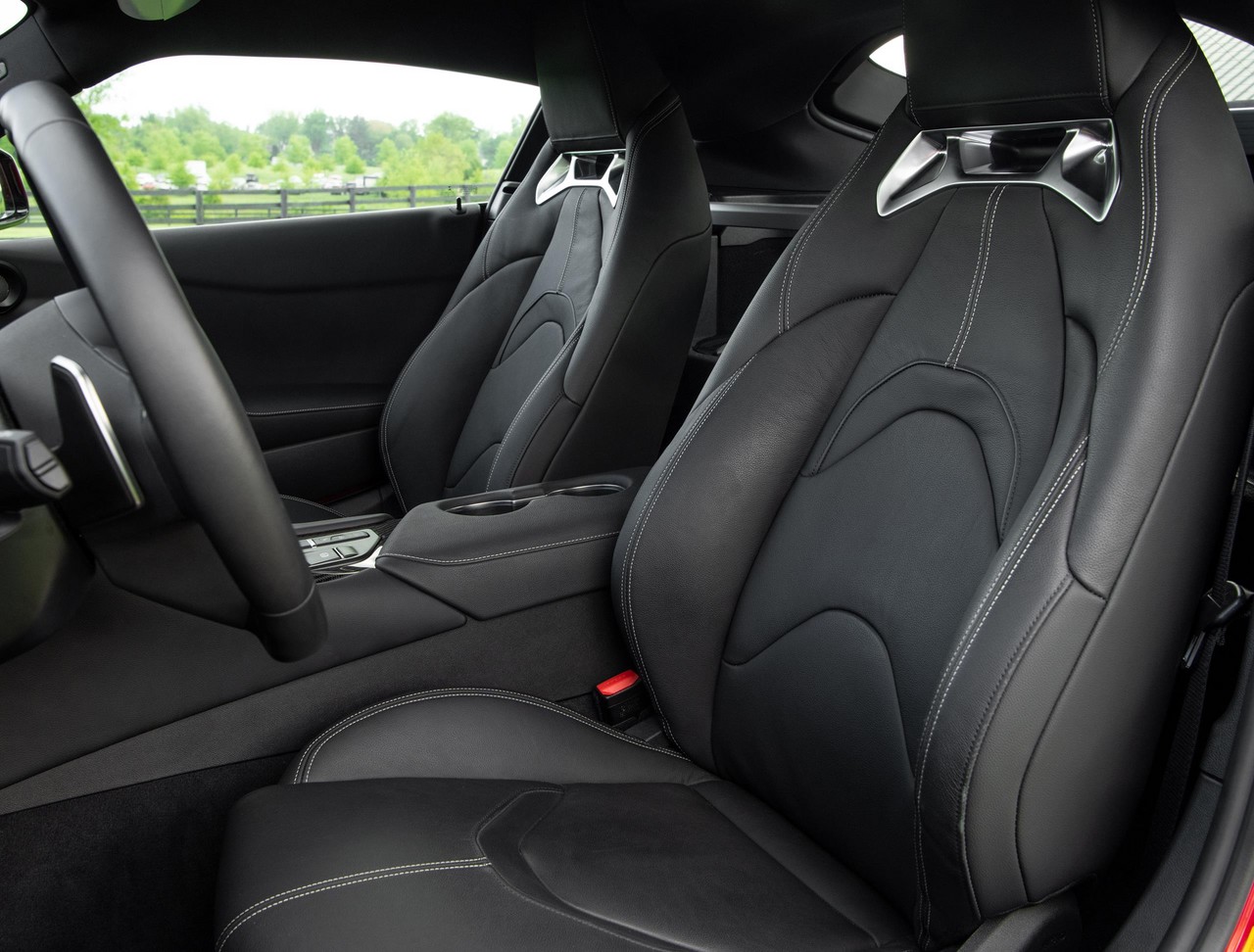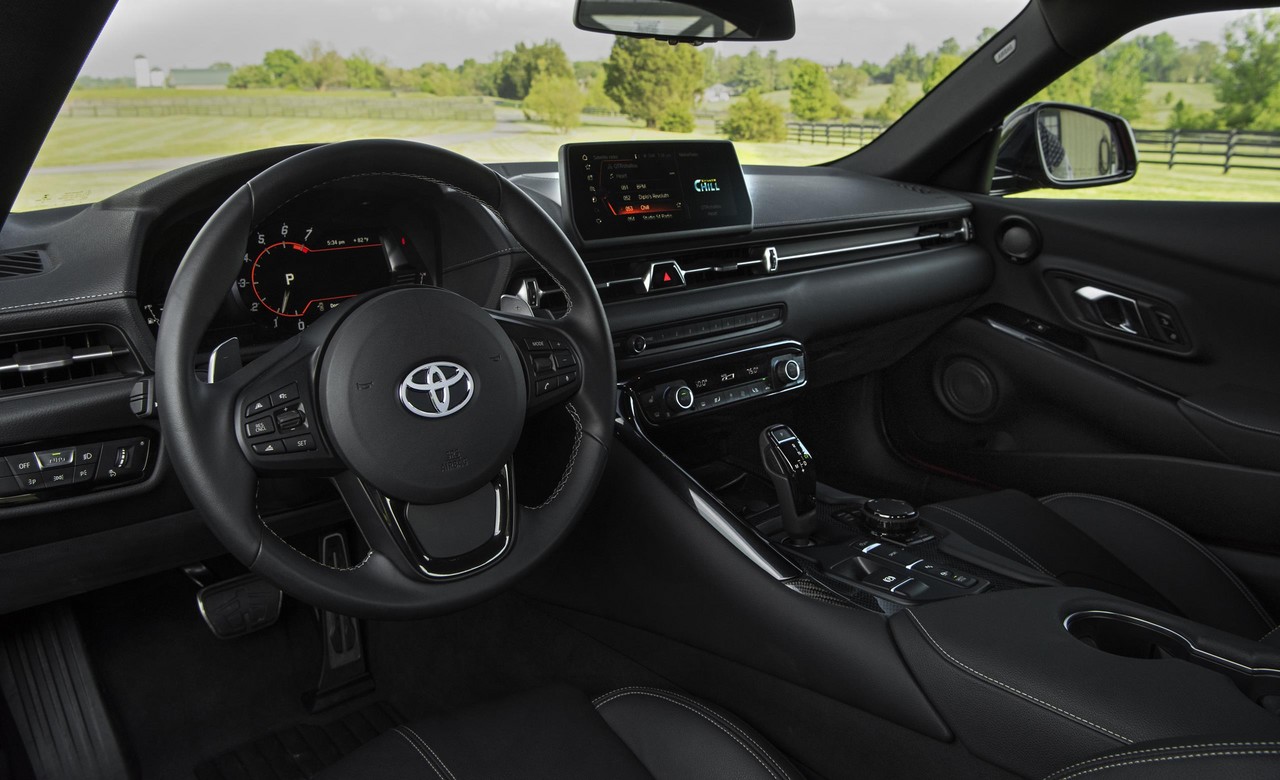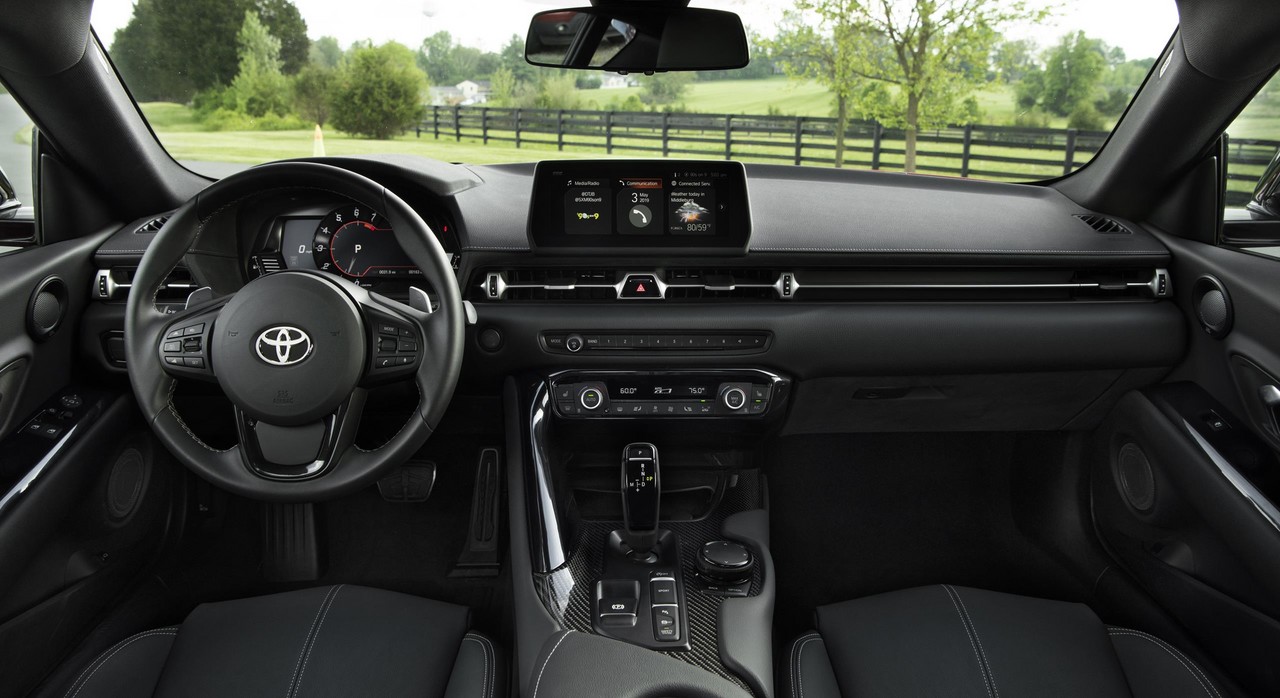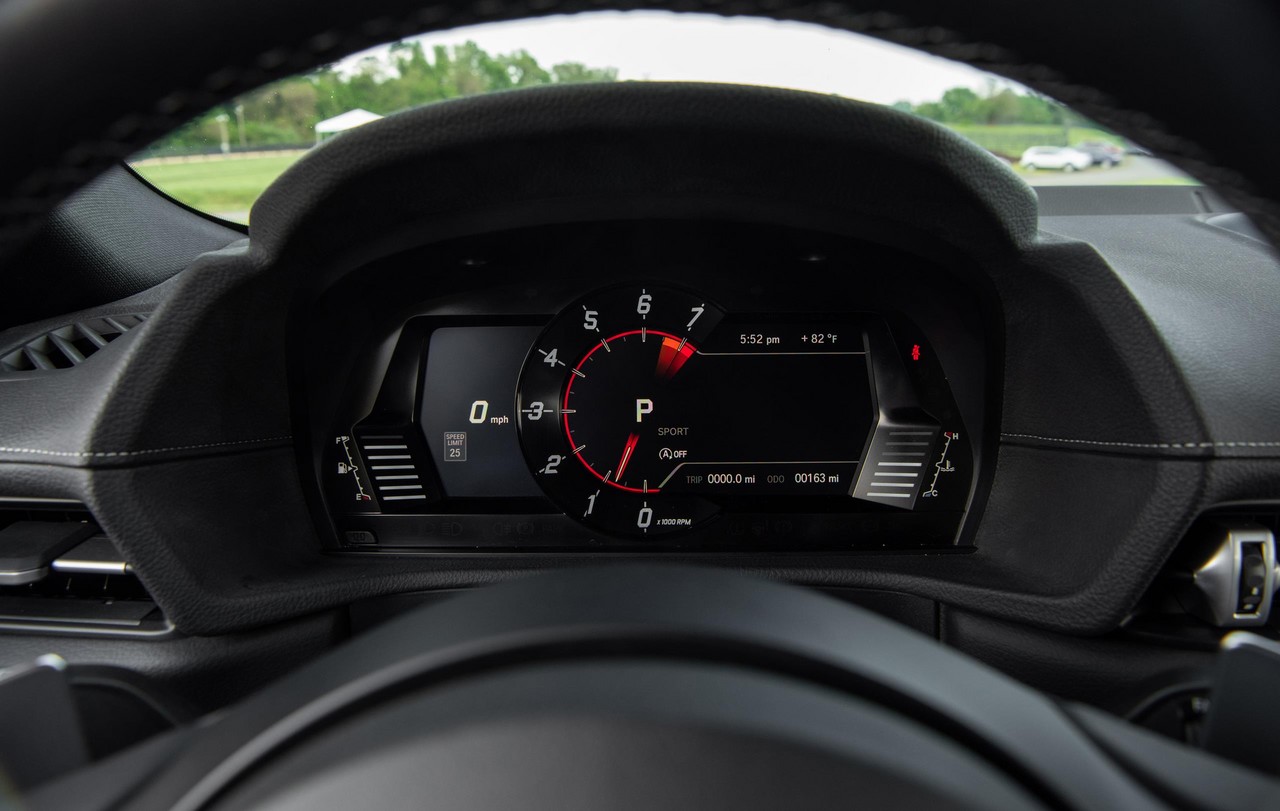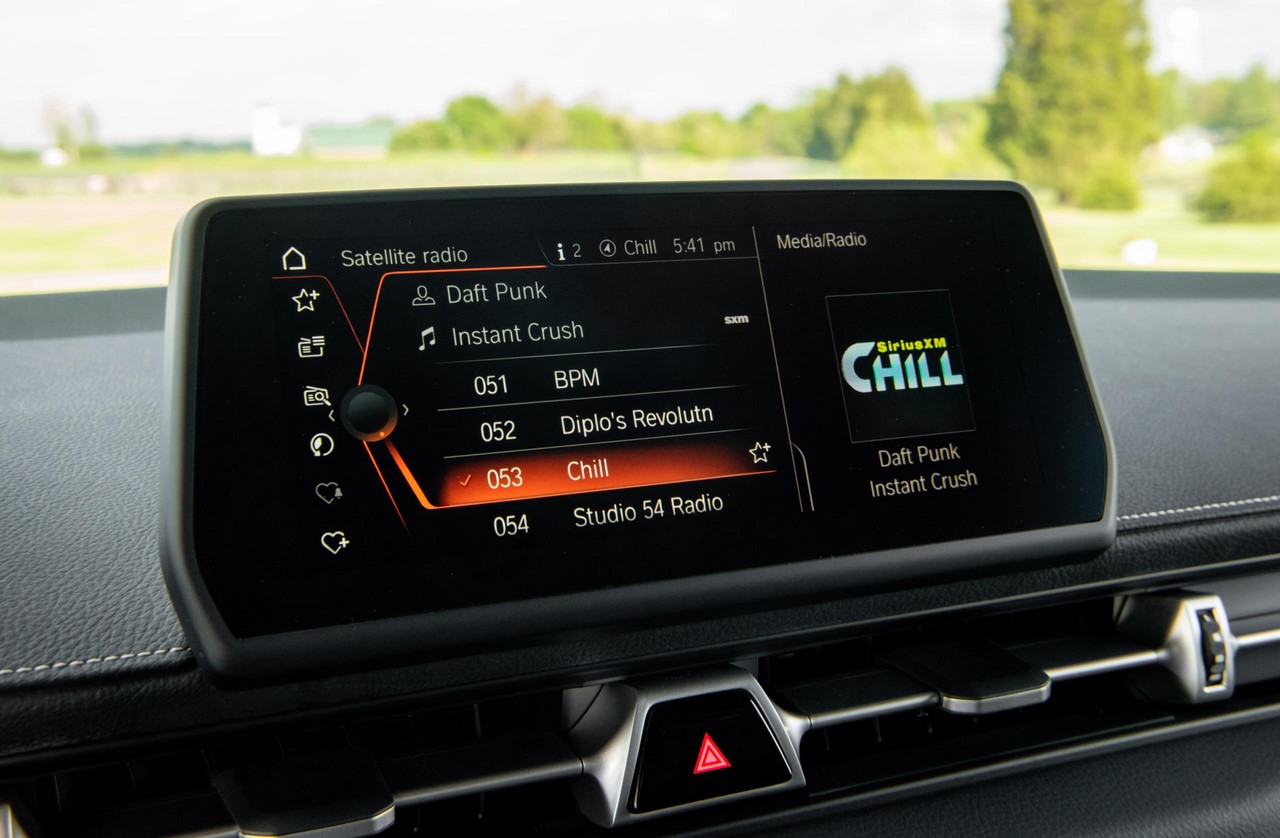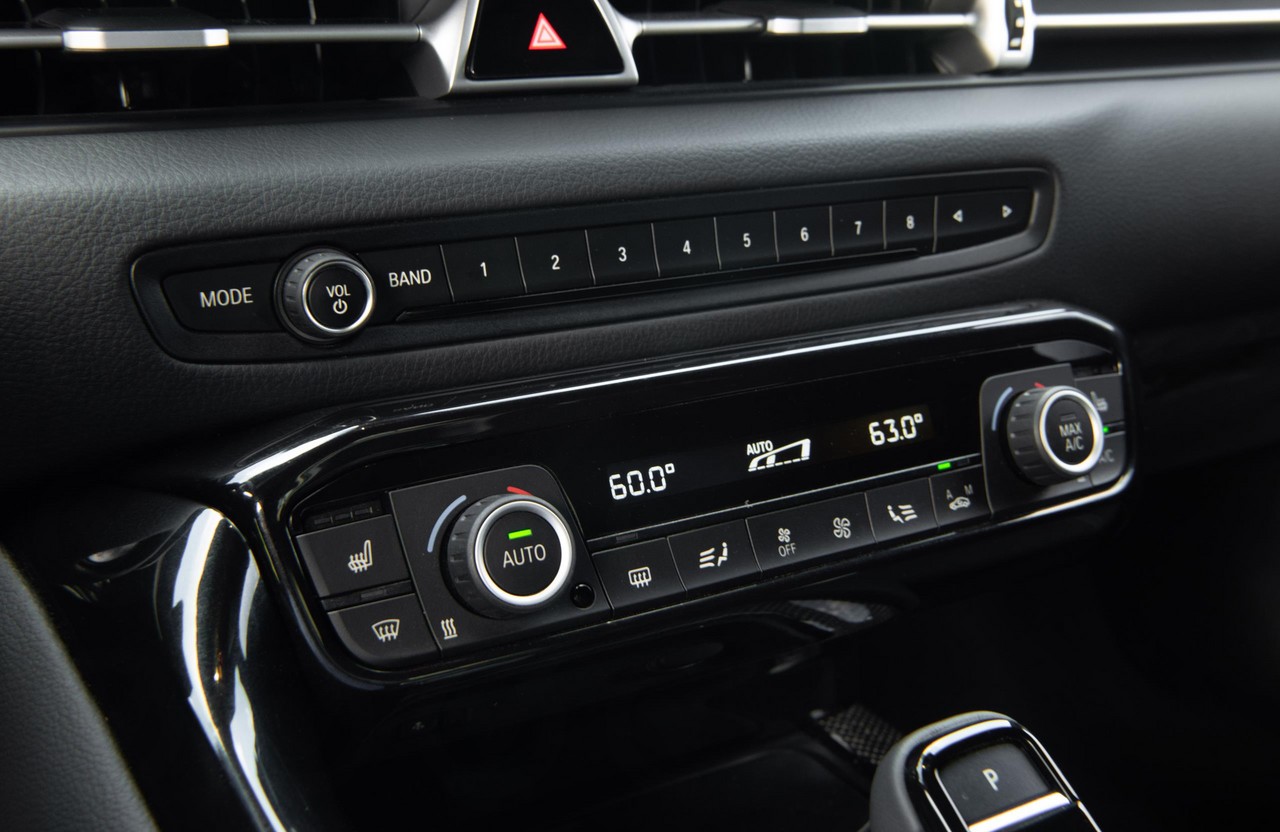
- Powerful 3.0-litre six-cylinder turbo engine (from BMW)
- Refined eight-speed automatic transmission (from ZF)
- Impressive dynamics and acceptable suspension compliance
- Accurate steering
- Well-insulated cabin
- Switchgear and entertainment systems shared with BMW G29 Z4
- Digital instruments could be easier to read
- Muted exhaust note
- Brake fade during track use
- No manual transmission option
Overview
Released in Australia in September 2019, the Toyota J29 GR Supra was a two-seat coupe. Manufactured by Magna Steyr in Graz, Austria, the rear-wheel drive J29 GR Supra was powered by BMW’s 2998 cc B58B30C turbocharged inline six-cylinder petrol engine and had an eight-speed ZF transmission. Upon their release, the GR Supra GT and GTS had recommended retail prices of $84,900 and $94,900, respectively.
Produced by BMW, key features of the 2998 cc B58B30C engine included its double overhead camshafts, four valves per cylinder, variable intake and exhaust valve timing, variable intake valve lift, single twin-scroll turbocharger, direct fuel injection and 11.0:1 compression ratio. Furthermore, the eight-speed ZF transmission for the J29 GR Supra had a launch control function which assisted the GR Supra to accelerate from rest to 100 km/h in 4.3 seconds; its top speed was electronically limited to 250 km/h.
Over the combined ADR 81/02 test cycle, fuel consumption was 7.7 litres per 100 km.
| Engine | Trans. | Peak power | Peak torque | |
|---|---|---|---|---|
| GR Supra | 2998 cc B58B30C turbo petrol I6 | 8sp auto | 250 kW at 5000-6500 rpm | 500 Nm at 1600-4500 rpm |
Body and dimensions
The Toyota J29 GR Supra was underpinned by BMW’s CLAR architecture which was shared with the BMW G29 Z4 Roadster ;both vehicles were manufactured by Magna Steyr. Compared to the G29 Z4 Roadster , the J29 GR Supra was 54 mm longer (at 4379 mm), 10 mm narrower (1854 mm) and 12 mm lower (1292 mm), though wheelbase length (2470 mm) was unchanged; luggage capacity was 290 litres (VDA method). The GR Supra had a kerb weight of 1495 kg.
Designed by Nobuo Nakamura (Project Chief Designer), design features of the J29 GR Supra includes its –
- Front end which combined influences from the A80 Supra (fenders and upper fascia) and Formula One cars (lower fascia with prominent central grille section flanked by large air intakes);
- Rearward-positioned cockpit to achieve a near 50:50 weight distribution;
- Integrated rear spoiler which was an ‘homage’ to the optional hoop-like rear wing for the A80 Supra Turbo ; and,
- ‘Reverse-wedge cabin’ and ‘double bubble’ roof which were derived from the Toyota 2000GT .
Suspension and steering
The Toyota J29 GR Supra had double-joint type MacPherson strut front suspension and five-arm rear suspension. As standard, the GR Supra had electronically-controlled dampers which react to driving conditions to vary damping resistance.
The Toyota GR Supra had rack-and-pinion steering with electric power assistance. The GR Supra had a variable steering ratio which ranged from 15.1:1 to 9.8:1; its turning circle was 10.4 metres.
Safety equipment
Standard safety equipment for the Toyota J29 GR Supra included dual front airbags, a driver’s knee airbag, front seat-mounted airbags, curtain airbags, ABS, electronic brake force distribution, brake assist, electronic stability control, traction control, active front seat head restraints and front seatbelts with pre-tensioners and load limiters.
As standard, the Toyota GR Supra was equipped with ‘Toyota Safety Sense’ active safety technologies which included –
- Pre-Collision System (PCS) with pedestrian and daytime cyclist detection: operating at speeds above 10 km/h, PCS used a front-mounted monocular camera sensor and millimetre-wave radar sensor to detect vehicles and pedestrians on the road ahead, during the day or at night; cyclists could also be detected during daylight. If there was a collision risk, the driver would receive an audible warning and a ‘Brake’ message would be shown on the multi-information display. In its second stage, Pre-Collision Brake Assist prepared the braking system so that it responded faster if the brake pedal was depressed. If the driver did not react and a collision was imminent, maximum braking force would be applied automatically to reduce the severity of the collision;
- All-Speed Active Cruise Control (ACC): operating across the vehicle’s full speed range, ACC could maintain a safe distance from the vehicle ahead by braking (until stationary if required) and accelerating up to the maximum cruising speed set by the driver;
- Lane Departure Alert (LDA): used the windscreen-mounted camera to monitor the vehicle’s position relative to lane markings on the road surface. If the vehicle was about to depart from its lane without the turn indicator having been applied, an audible tone would alert the driver and a warning would appear in the multi-information display. If the GR Supra continued to move outside the lane, steering force would be applied to assist the driver in returning the vehicle to its lane;
- Automatic High Beam (AHB): operating at speeds above 30 km/h, Automatic High Beam automatically switched between low and high beam lighting according to ambient light conditions. As such, Automatic High Beam used the windscreen-mounted camera to detect the headlights of oncoming vehicles or traffic ahead and, if detected, automatically switched to low beam to avoid dazzling other road users; and,
- Road Sign Assist (RSA): the windscreen-mounted camera could recognise certain speed limit signs so that the speed limit would be displayed on the multi-information display (MID) in the instrument cluster.
As standard, the Toyota GR Supra was also equipped with:
- Blind Spot Monitor: used radar sensors mounted at the rear corners of the vehicle to detect vehicles in adjacent lanes. If a vehicle was detected in the driver’s blind spot, the driver would be alerted by illumination of the LED warning indicators in the door mirror on the side of that vehicle. If the driver activated the turn indicators, the LEDs would flash rapidly; and,
- Rear Cross Traffic Alert: used the same radar sensors to monitor approaching traffic as the driver reversed out of a parking space and would warn the driver if vehicles were detected.
Wheels, tyres and brakes
The Toyota GR Supra GT was fitted with 18-inch x 9.0J front wheels with 255/40 ZR18 tyres and 18-inch x 10.0J rear wheels with 275/40 ZR18 tyres. Furthermore, the GR Supra GT had 348 mm by 36 mm ventilated front brake discs with fixed four-piston calipers and 330 mm by 20 mm ventilated rear discs with floating single-piston calipers.
The GR Supra GTS was fitted with 19-inch x 9.0J front wheels with 255/35 ZR19 tyres and 19-inch x 10.0J rear wheels with 275/35 ZR19 tyres. Compared to the GR Supra GT, the GR Supra GTS had 345 mm by 24 mm ventilated rear discs.
Features: Toyota GR Supra GT
The standard infotainment system for the Toyota GR Supra GT consisted of a 205 watt audio system with ten speakers, an 8.8-inch multimedia display with navigation, Bluetooth mobile phone connectivity, a USB input and wireless mobile phone charger.
Beyond this, standard features for the Toyota GR Supra GT included leather-accented sports seats with eight-way power adjustment and heating, dual-zone climate control air conditioning, six-lens LED headlights, dusk-sensing headlights, rain-sensing wipers, front and rear parking sensors, a rear view camera, a leather-wrapped steering wheel with gearshift paddles, remote central locking with proximity key, power adjustable and heated door mirrors with folding function, power mirrors, tilt and telescopic steering wheel adjustment, an electrochromatic rear view mirror, push-button start, a high-definition TFT colour display for the instrument panel, tyre pressure monitor, an alarm and immobiliser.
As standard, the GR Supra was fitted with an active limited slip differential which uses an electric motor and multi-plate clutches to control lateral torque. As such, the active differential controls torque distribution between the rear wheels, with stepless variable locking from 0-100 per cent.
For the GR Supra, the driver could select from Normal and Sport drives modes; the latter enhanced throttle response, increases steering weight, provided faster gearshifts, more aggressive operation of the limited slip differential and greater exhaust noise.
Features: Toyota GR Supra GTS
Compared to the Toyota GR Supra GT, the Supra GTS was further equipped with a 500 watt JBL audio system with twelve (12) speakers and a colour head-up display.
Specifications
